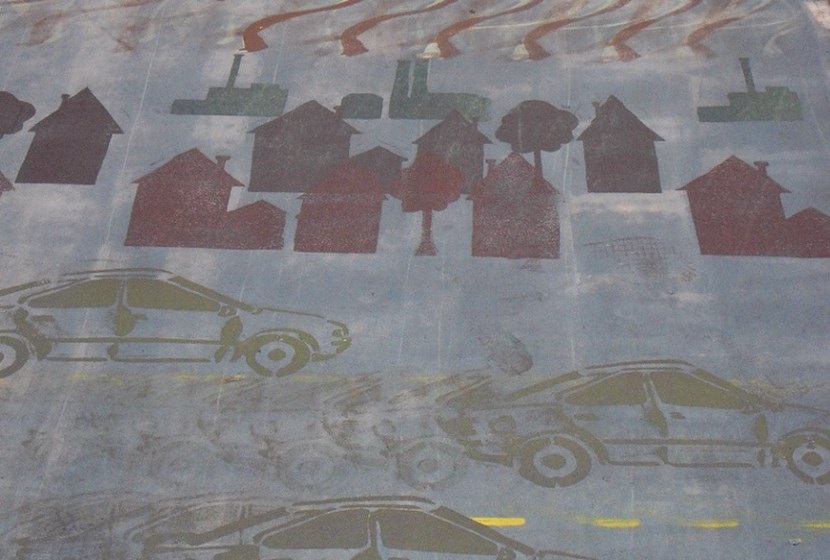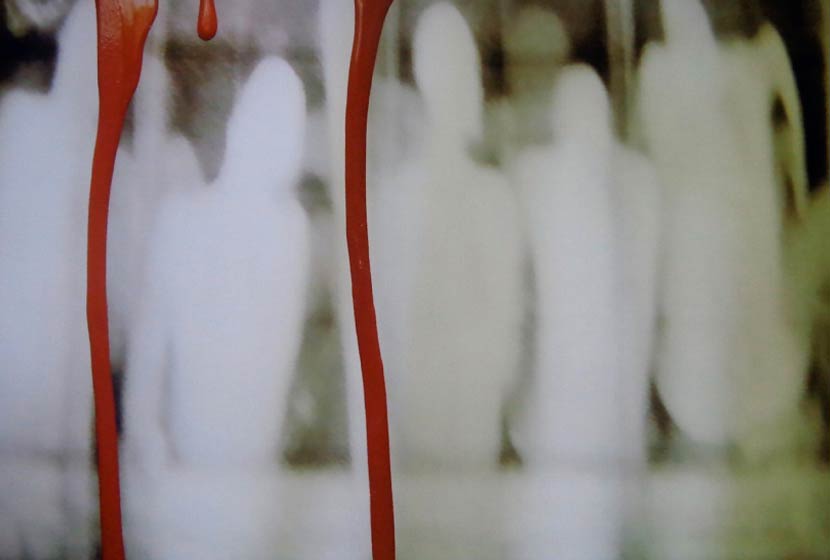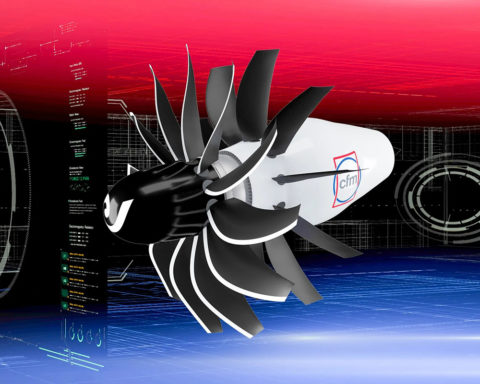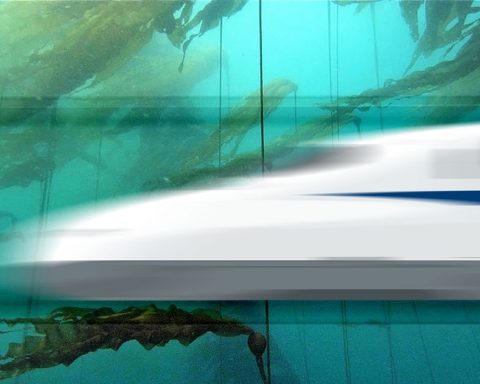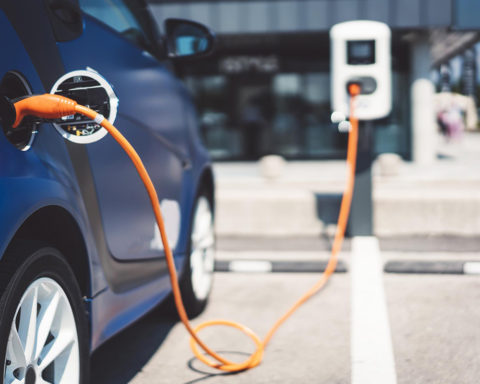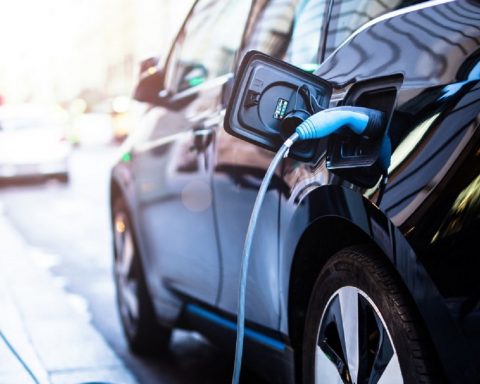Intermodality, hybridization, electro-mobility, development of innovative vehicles, introduction of personal mobility assistants, blending of the real and the virtual... The new forms of mobility are looking for a certain "ethic" - less energy and mileage consuming, more peaceful and "connecting" - and are shaping the shape of tomorrow's cities, which will be resolutely "multi-mobile".
After having long favoured one mode of travel over the others - the city for cars or the city without - travel policies now favour a diversity of mobility solutions or "mobility cocktail", to use the North American expression.
This broadening of the range of mobility services meets a dual economic and environmental imperative. It adapts to territories but also to multiple uses and to the diversity of lifestyles, which are particular, fragmented and out of sync.
This multi-modality is based on a powerful paradigm shift: from being a simple transport tool, mobility - increasingly individualised, intelligent and interactive - has become the dominant way of life in our society. It is the main attribute of contemporary homo mobilis, which, with its backpack and smartphone in its pocket, is at the heart of mobile services. In a single day, the city dweller uses public transport, walks, rents or shares a car or rides a bicycle.
This multimodal approach, a veritable patchwork of mobility solutions, is at the heart of the "mobility management" system conducted with the Greater Lyon business territories, and supported by the Greater Lyon Foresight Department with a specific feature: relying on mobility uses and practices to change mobility behaviours.
This conceptual change, whose striking feature is the decorrelation between the possession of an automobile object and the use of a mobility service, opens the way to numerous socio-technical innovations. The concept of "individual public transport" thus breaks up general categories, long held to be contrary. Many mobility operators, combining public and private, are developing a whole service economy in which information is the main driving force, as shown by the project Optimod Lyon. It is the software that combines, or even transmutes, the new modes and the key element that changes mobility behaviour.
PARADIGM SHIFTS IN MOBILITY; MAJOR MOBILITY TRENDS
The transition from mono-modal to multi-modal and trans-modal, from transport tool to lifestyle, the development of shared cars and bicycles, the appearance of cybercars... The new forms of mobility are a melting pot of innovation.
 From all automotive to combination of modes
From all automotive to combination of modes
The model of the individual combustion car, which was, in the 20th century, a symbol of freedom and social success and the paragon of door-to-door service, has found its limits, mainly for economic and environmental reasons.
In France, transport emissions increased by 19% between 1990 and 2007, mainly due to the increase in road traffic and urban sprawl. 82% of the kilometres travelled are by car (10% by train). (Source: National Transport Accounts Commission).
It is now necessary to reduce the budget allocated by households for their daily travel, which, because it weighs heavily on the most modest, is a factor of social segregation. It is also a question of limiting CO2 emissions and energy consumption, restricting the use of cars in public spaces and limiting traffic jams, which are a source of stress, waste of time and money, and pollution.
The stakes are high: by 2050, polluting emissions will have to be divided by four, an objective that the Regional Climate Air Energy Schemes are working towards.
"It is important to understand that on a congested roadway, at almost the same flow rate, the harmful effluents are two to four times greater than on a fluid roadway. Emissions are more than twice proportional to the time the vehicle is in transit. This is considerable! "explains Alain Bonnafous, Professor Emeritus of the University of Lyon 2, researcher at the Transport Economics Laboratory.
However, the development of public transport, a priority of the Grenelle Environment Round Table, offers an effective alternative solution for only a part of the demand for mobility - mainly in dense areas. It is therefore necessary to open up the range of modal supply, which cities have already largely done by promoting soft modes, for example.
Optimising the mobility of an area is therefore no longer the search for the "ideal mode", but the variety of modes, fast and slow, mechanised and gentle, individual and collective, etc.
"The broadest possible multi-modality is now essential: it must be considered as a principle of urban ecology, as modal diversity is, for the urban ecosystem, an equivalent of biodiversity for natural ecosystems," says Georges Amar in his book "Homo mobilis, le nouvel âge de la mobilité".
==> Read the interview with Alain Bonnafous, Professor Emeritus of the University of Lyon 2, researcher at the Transport Economics Laboratory.
Modal transmutation
 If the evolution of uses suggests this shift from ownership to the sharing of modes of transport, it is intelligent mobility or smart mobility that makes it possible. If I can share a bikes or a car2go, it's because an information system allows me to locate and use them. "Information, by moving from data or instructions for use to software status, becomes the instrument of modal transmutation. The software transmutes the machine: you go from the car to the co-car which is not at all the same," explains Georges Amar.
If the evolution of uses suggests this shift from ownership to the sharing of modes of transport, it is intelligent mobility or smart mobility that makes it possible. If I can share a bikes or a car2go, it's because an information system allows me to locate and use them. "Information, by moving from data or instructions for use to software status, becomes the instrument of modal transmutation. The software transmutes the machine: you go from the car to the co-car which is not at all the same," explains Georges Amar.
For the futurist, transmodality, understood as the crossing of categories and the blending of concepts, is a field of innovation, the first examples of which are carpooling, the paedibus (blending of school buses and walking), shared bicycles, the BRT (blending of buses and metro initiated in Curitiba, Brazil) or the tram-train.
"In the city of tomorrow, there will be 50 or 60 modes of transport, not four or five! These mobilities will be in addition to transmodal mobilities. There will be physical and virtual, slow and fast, individual and collective; all of these will intersect happily. This is why we will have dozens and dozens of ways of being mobile. And that's what makes a city lively," says the former director of RATP's Foresight and Innovation Development Unit.
==> Read the interview with Georges Amar, former Director of the Foresight and Innovation Development Unit at RATP, mobility consultant and prospectivist.
From transport to mobile life; from possession to use
 The emergence of the concept of mobility - which now takes precedence over that of transport or travel - reflects a change in usage and, at the very least, a change in point of view. Transport is a tool, a piece of equipment, which implies a certain passivity on the part of the person being transported. Mobility is an attribute of people (and objects, even societies and territories). Understood as a skill, it enhances the active character of the mobile person. For George Amar, mobility has even become "an almost human and citizen's right. Mobility for all and each one his own mobility, such is the watchword of contemporary society".
The emergence of the concept of mobility - which now takes precedence over that of transport or travel - reflects a change in usage and, at the very least, a change in point of view. Transport is a tool, a piece of equipment, which implies a certain passivity on the part of the person being transported. Mobility is an attribute of people (and objects, even societies and territories). Understood as a skill, it enhances the active character of the mobile person. For George Amar, mobility has even become "an almost human and citizen's right. Mobility for all and each one his own mobility, such is the watchword of contemporary society".
This implicit inclusion of mobility in the category of social rights is also, for the prospectivist, the expression of a profound societal evolution: "mobility is now the standard way of life in contemporary society and economy".
The subject himself becomes a vector; he navigates in a space of mobility; he is a co-producer of his mobility. This conceptual mutation is reflected in a major phenomenon: the decorrelation between the possession of an automobile object and the use of a mobility service. The model of the owner car that is pampered and whose horsepower is displayed as a symbol of virility or an outward sign of wealth is certainly still tenacious, but is losing momentum. I no longer need to own my own mode of transportation: I use the mode that suits me at the right time.
Pierre Soulard, head of the Urban Mobility Department at the Greater Lyon Highways Department, observes this trend in the Lyon metropolitan area. For him, "this decorrelation is at the heart of new travel habits such as car sharing, car pooling or self-service bicycles".
==> Read the interview with Pierre SoulardHe is responsible for the Urban Mobility Department at the Greater Lyon Highways Department.
Innovative vehicles, cybercars and electro-mobility
(Photo : Aa Weez(see also Eon Motors, a new product at the Paris Motor Show in October 2012).
 Before the multiplication of these mutant mobilities, a generation of innovative vehicles, whether thermal, electric or hybrid, has already appeared on the automotive market. Many of these models are reinventing mobility systems that are widely used in some countries, including China and India, such as the bicycle taxi or the rickshaw. This is the case of the Japanese Kei car, the Smart, the MP3 format with bodywork (BMW, Peugeot) or small compact cars for 3 to 4 people (less than 3 meters) that limit road and parking congestion.
Before the multiplication of these mutant mobilities, a generation of innovative vehicles, whether thermal, electric or hybrid, has already appeared on the automotive market. Many of these models are reinventing mobility systems that are widely used in some countries, including China and India, such as the bicycle taxi or the rickshaw. This is the case of the Japanese Kei car, the Smart, the MP3 format with bodywork (BMW, Peugeot) or small compact cars for 3 to 4 people (less than 3 meters) that limit road and parking congestion.
Adapted to contemporary living conditions, these small and light vehicles consume less energy. "In urban or suburban traffic, a 600 kg car needs half the energy to move around than a conventional 1200 kg car", notes the report on new forms of mobility from the Center for Strategic Analysis.
The most forward-looking vehicles are the "cybercars" to which design historian Constance Rubini devotes a chapter in her book "The Mobile City." These vehicles with automated driving operate as a fleet and communicate with each other. The IMARA research team at the French National Institute for Research in Computer Science and Control (INRIA) is working on the development of these vehicles of the future, some prototypes of which are in the test phase. What remains to be done is to perfect their ability to detect obstacles so that they can be used in the city. The Chenillard is a project for a small automated urban car for two or three people who could get to the desired address on a simple call. Powered by an electric motor, it would draw its current from a rail integrated into the ground, as some trams do. Finally, theLBSR is a project for an automated driverless vehicle, powered by electricity and solar energy, in which passengers will be like in a living room. (Source: Constance Rubini, La Ville mobile, Editions Cité du design, February 2012).
We already know electric 100% models, such as Renault's ZOE and TWIZY, Nissan's LEAF, SynergEthic's TILTER (three-wheeled vehicle), Citroën's C-ZERO or Ford's E-BIKE CONCEPT electric bicycle. With a range often limited to 150 km, these small urban electric vehicles require a battery recharging infrastructure to be set up in the areas concerned. "We need electro-mobility in the city, because it means a quieter, less polluted and less stressful street," emphasizes Gilles Vesco, Vice President of Greater Lyon in charge of New Mobilities. The elected representative points out that electro-mobility is already largely a reality in Lyon's public transport network since 73% of journeys are made in electric mode.
This proportion must now be increased and accompany the arrival of individual or shared electric cars. "We need to prepare for the arrival of electric cars in Lyon's car parks," he explains. The imminent arrival of hybrid and rechargeable electric vehicles in urban areas highlights the need for dialogue between manufacturers, operators and local authorities in order to identify and implement the most effective support measures.
 Another recent innovation: as part of the "Smart Community" demonstrator project developed by NEDO at Lyon Confluence, a fleet of electric car-sharing cars powered by photovoltaic energy is being tested.
Another recent innovation: as part of the "Smart Community" demonstrator project developed by NEDO at Lyon Confluence, a fleet of electric car-sharing cars powered by photovoltaic energy is being tested.
Innovative and eco-responsible vehicles (electric, hybrid) are also being developed to ensure the delivery of goods in the city, as part of optimised transport systems. Tests are carried out throughout Greater Lyon as part of the competitiveness cluster. Lyon Urban Trucks & Bus.
==> Read the interview conducted on 30/05/2010 with Eric Poyeton, President of the Lyon Urban Trucks & Bus Competitiveness Cluster: "in tomorrow's transport, there is no science fiction, there are only pragmatic solutions".
Sustainable mobility and the liveable city
 To respond to the environmental emergency, what is the best strategy: promote "clean" kilometres or... drive fewer kilometres? Faced with the unsustainable nature of mobility, with its attendant congestion, network saturation and pollution, more and more voices are being raised in favour of a certain "demobility", like others advocating a reduction in the number of kilometres travelled. Bruno Marzloff, Director of the Chronos Group, is one of those. He pleads for a peaceful city that favours proximity and slowness: "Too much travel kills mobility and calls for other balances: a walkable city, a cycling city, a city of short distances, a city of proximity, in short, a liveable and, in so doing, sustainable city. The mobile city multiplies choices (through digital applications), opens up to sharing solutions (sharing cars, bicycles, taxis, but also sharing wifi networks, and even other communalities), to new hubs (third places that house transport, connections, remote control instructions, ephemeral work spaces, places of sociability, etc.). It is a peaceful city because it favours proximity, slowness, and therefore encounters, in short a new urbanity. »
To respond to the environmental emergency, what is the best strategy: promote "clean" kilometres or... drive fewer kilometres? Faced with the unsustainable nature of mobility, with its attendant congestion, network saturation and pollution, more and more voices are being raised in favour of a certain "demobility", like others advocating a reduction in the number of kilometres travelled. Bruno Marzloff, Director of the Chronos Group, is one of those. He pleads for a peaceful city that favours proximity and slowness: "Too much travel kills mobility and calls for other balances: a walkable city, a cycling city, a city of short distances, a city of proximity, in short, a liveable and, in so doing, sustainable city. The mobile city multiplies choices (through digital applications), opens up to sharing solutions (sharing cars, bicycles, taxis, but also sharing wifi networks, and even other communalities), to new hubs (third places that house transport, connections, remote control instructions, ephemeral work spaces, places of sociability, etc.). It is a peaceful city because it favours proximity, slowness, and therefore encounters, in short a new urbanity. »
==> Read Bruno Marzloff's text, director of the Chronos group.
By favouring the city of short distances, regional planning schemes try to limit mobility obligations by bringing services, jobs, shops and population centres closer together in central areas. The promotion of "short circuits" is part of the same eco-virtuous approach, as is the development of teleworking and remote services.
For Georges Amar, this is a change in value: mobility is no longer evaluated in terms of crossing distances or speed, but "of creating links, opportunities and synergies", which he sums up with the expression "reliance".
Jean-Pierre Orfeuil, professor of planning at the University of Paris-Est and specialist in urban mobility, uses another formula: for him, "mobility is no longer thought of in terms of moving from A to B, but in terms of travel, and travel must be a pleasant, friendly and connected experience".
Based on this observation, Georges Amar predicts that "in the coming years, there will be an increasing number of mobility offers designed to maximise the 'alliance per kilometre', while "political trade-offs will gradually penalise 'poor alliance kilometres'". How will this happen? The prospectivist does not explain it. But, if they are not repressive, public policies can provide a strong incentive to optimise travel.
Read: Georges Amar, Homo mobilis, The new age of mobility, Editions fyp.
Conclusion
The shift from mono-modal to multi-modal, from transport tools to lifestyles, from car ownership to the use of mobility services, the irruption of intelligent mobility as the driving force of a service-based economy, environmental injunctions to promote sustainable mobilities... Mobilities are undergoing major paradigm shifts that open up a vast field of innovation.
Private initiatives have already largely taken over, with, for example, the arrival of new operators for battery rental or recharging, car-sharing and car-pooling services, remote communication services, and so on. Multiple partnerships are being forged between the various local authorities - which at present have only travel skills focusing on infrastructure, road and public space management and the organisation of public transport - and citizens and private companies.
In this increasingly complex game of actors, cities and territories have a decisive role to play, providing incentives and support, but also arbitration.
For if, as Georges Amar believes, the city is "precisely the alchemy of territory and mobility", the mobility system is consubstantial with the city itself. It is a sign of its "genius" and vitality.
Back Anne-Caroline Jambaud / http://www.millenaire3.com/ May 2012
Photo credit: In September 2009, as part of the day in the city without my car, the artist Roadsworth has painted this canvas live to make passers-by aware of alternative modes of transportation.
{Jacuzzi on}

